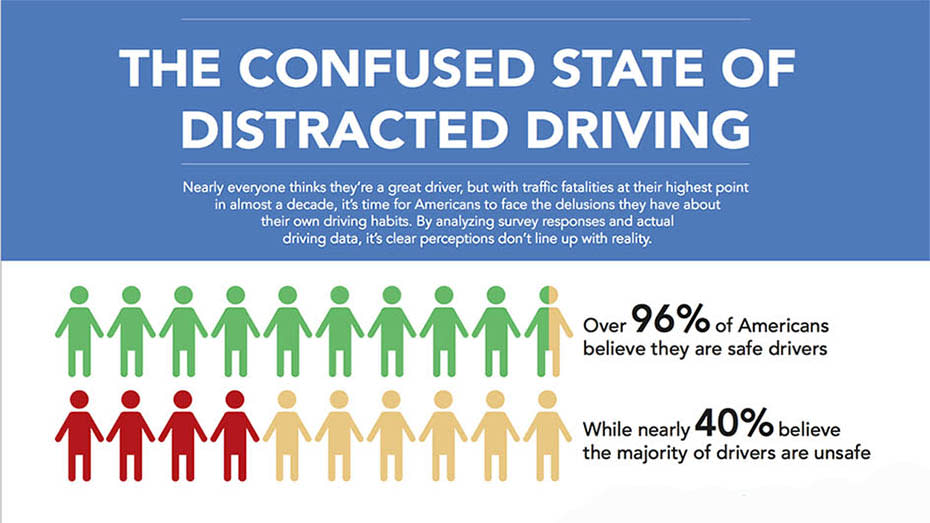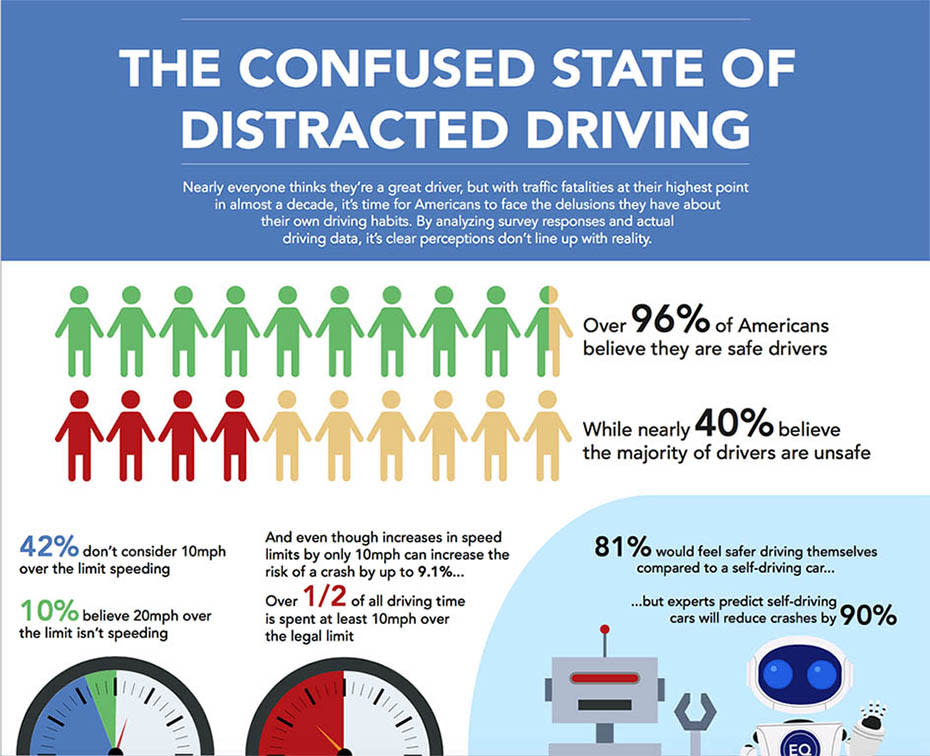The Confused State of Distracted Driving

As we consider New Jersey's recently proposed bill and New York's potential Textalyzer, it's clear that everyone is trying to find a solution to the distracted driving epidemic. New Jersey's bill could become the harshest distracted driving law yet—leaving prohibited behavior open to interpretation as anything "unrelated to the operation of the vehicle, in a manner that interferes with the safe operation of the vehicle." Coffee, eating a granola bar, adjusting the radio volume? That all may be illegal. Earlier this year, New York also shocked with their proposed textalyzer that would allow authorities to test for phone use behind the wheel, similar to how they test drivers for alcohol with a breathalyzer.
A recent national online survey, provides insight into this epidemic and as it turns out, drivers may have some misperceptions about their driving habits, particularly in regards to their use of technology behind the wheel.
While it is up for debate on whether these laws truly help curb distracted driving, the truth is that inattention behind the wheel has become a widespread problem and states, local governments and drivers are all struggling to find an effective way to end unsafe behavior on the road. The recent study, fielded by EverQuote, surveyed 2,300 licensed American drivers and found interesting information about drivers' habits and the confused state of distracted driving.

About 96% of Americans believe they are safe drivers, yet over half of all driving time is spent speeding at least 10 mph over the legal limit. Nearly 40% don't believe the majority of drivers on the road are safe.
As far as autonomous technology goes, it appears that Google, Tesla, Ford and other creators of self-driving cars have a long way to go in convincing Americans. Even though self-driving car technology is expected to reduce crashes by 90%, about 81% of drivers would feel safer driving themselves. The benefits of self-driving cars will need to be proven to them in the future years before the technology will be widely accepted on the roadways.

While American drivers seem to overestimate the potential dangers of autonomous car technology, they seem to underestimate the danger of using their phones behind the wheel.
As if their time spent speeding wasn't scary enough, drivers are on their phones for .4 miles for every 11 miles driven. That equals out to 114 billion distracted driving miles per year—4.5 million trips around the world without looking up from the phone.
Additionally, drivers are also unaware of just how often they use their phones behind the wheel. While 56% of drivers admit to using their phone while driving in the last 30 days, 96% actually do, according to EverDrive data. Only 52% would allow a mobile app to prevent their phone use behind the wheel. Do drivers not understand the dangers of distracted driving? Or do they know them and choose to use their phones anyways?

Interestingly enough, the majority of drivers (61%) don't think their state does enough to stop distracted driving, even though 55% of those same drivers admit to phone use in the past month, and 12% admit to it on most or all drives. Apparently, drivers believe there should be stricter laws because they aren't so great at policing themselves. Perhaps, that means New Jersey and New York have the go-ahead for more legislation to end distracted driving.
Drivers today are in a confused state of distracted driving. They want their state to do more and they see other drivers as unsafe, but they don't seem to be honest with themselves about their own dangerous driving habits.
Can technology help solve this epidemic even as it remains part of the problem? Let's hope so. Over half of American drivers would be willing to allow a mobile app to prevent their phone use behind the wheel, and if they feel their state does not do enough, perhaps technology can play a role by doing more. With safe-driving apps and car tech, it's time to change this state of confused driving.
View the full infographic below, and read more about the study here.

